Future shack: a Jean Prouvé prefab shelter gains mod-con pods and a new lease of life
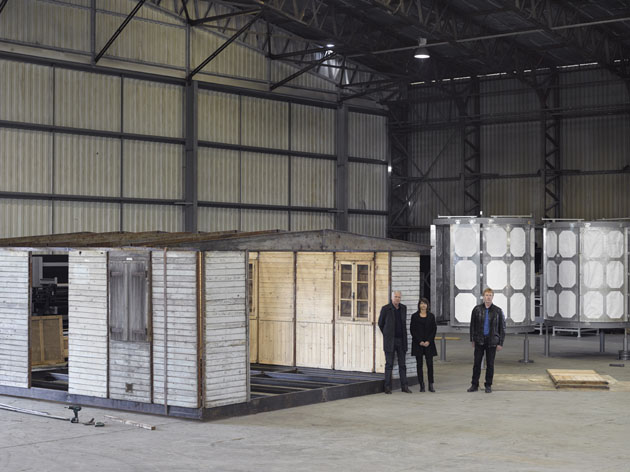
York might not be an obvious place to go looking for Jean Prouvé masterpieces, but down an unremarkable dirt road nestled amid yellow rapeseed feilds, inside a hangar- sized warehouse, sure enough, there’s a six-metre-square Prouvé demountable house sitting in a corner, looking rather quaint. Its weathered steel-and-timber frame reveals the 70-odd years that have passed since it was originally built in 1944, as part of an order for emergency housing from the Ministry of Reconstruction and Town Planning, to rehouse war victims in bomb-ravaged France.
Nearby, two newly commissioned, unfinished rocket-shaped pods, their insulation and metal framework still exposed, are propped on stilts as if preparing for take-of. When completed, the cylindrical capsules, designed by Rogers Stirk Harbour + Partners (RSHP), will host kitchen and bathroom facilities that can be attached to the Prouvé house. Come mid-June, new and old will combine to transform a structure once intended as a disaster relief shelter into a modern holiday retreat that will be showcased at Design Miami/Basel by the Paris-based Galerie Patrick Seguin.
‘Isn’t it just beautiful?’ asks Patrick Seguin as he tours the Prouvé structure. He is on a visit to the workshop of Stage One, the firm behind the manufacture of RSHP’s pods (as well as the construction of recent Serpentine Pavilions), where the house is being assembled. ‘These buildings were conceived as temporary constructions to meet a necessity. They survived in very limited numbers and, in order to ensure they don’t disappear altogether, we must give them a second chance, a second function and a second life – yes, they must live again!’
Undeniably, the humble house is beautiful in its rusted, rustic simplicity and enduringly relevant in form and thinking. Seguin and RSHP’s ambition is to both preserve and reinvent a piece of architectural genius, lending it new power to engage and inspire, its signifcance underlined by extending its life into the 21st century. They hope the redesign might also encourage fresh thinking about demountable disaster relief housing.
The house is one of dozens that have passed through Seguin’s ownership since he founded his eponymous gallery in 1989, becoming one of the preeminent dealers of Prouvé furniture and architecture. Seguin embarked on the project in December 2013, approaching Richard Rogers, an old friend, about RSHP undertaking the adaptation, confident that the practice would respect the original structure, while offering an innovative solution. RSHP and Prouvé also had a bit of history: the French architect was president of the jury that determined the plans for the Centre Pompidou, and so played a pivotal role in selecting the now iconic Richard Rogers and Renzo Piano design. ‘I liked the idea of placing these two great practices into a dialogue with one another, a few generations apart,’ says Seguin.
‘The brief was rather simple: turn this house into an autonomous retreat that can function anywhere in the world, from summers in the south of France, to winters in Colorado,’ says Ivan Harbour, the RSHP partner leading the project along with Tadashi Arai, making it the firm’s smallest project in scale, though not its least complex. ‘Transforming a disaster relief house that is just about enclosure into a space with demountable plumbing and electrics is not so simple,’ he notes. For RSHP, the key was to touch the existing building as lightly as possible and avoid aping Prouvé’s language. Their adaptation, which adds just eight square metres of space to the house’s existing 36, would be clearly distinct and separate, while staying true to Prouvé’s mission.
The original structure’s prefabricated components could be assembled in as little as a day, a truly mobile home built without any foundation. The adapted structure is just as light on its feet and the house is now entirely self-sufficient, equipped with a bathroom and a kitchen powered by two service trolleys that slide discreetly underneath the house’s frame: one is for recycled rain water (drinking water will be topped up separately), the other for electricity (from solar panels). RSHP worked with engineers from ChapmanBDSP and Arup to iron out the many technical challenges that come with ftting complex functionalities into such a small space.
The project has also involved refurbishing existing elements: vacuum insulation was applied in-between the house frame’s wooden panels, while the original roof and floor have been replaced with more durable solutions that will hold up in diverse climates. A new outdoor sun deck reveals a dual function: a cantilevered weight system allows the terrace to be folded up and used as a shutter.
‘What’s fascinating to me is that you’re very aware of what you are proposing for every five millimeters of space,’ says Harbour, who hopes that the adaptation will foster a discussion about energy efficiency, which is at the heart of the design. He underlines that the house is an exercise in moderation, rather than luxury.
‘Prouvé once said he would love to make architecture that leaves no trace on the landscape,’ adds Seguin. ‘This was 35 or more years before the word “sustainable” was even pronounced – this was so ahead of its time, and now we can bring that vision to life.’
For collectors whose interest might be peaked by the RSHP adaptation, it’s tough luck – this project is not for sale. After Design Miami/Basel, it will head to the south of France. The Seguins will install it on a property where their friend, the architect Jean Nouvel, is currently building them a home. They will occupy the Prouvé while the Nouvel is built and, later, it might transition into a guest house, when it’s not out on loan to a museum or educational institution, which Seguin hopes it will be frequently.
‘In Basel we will show the house furnished with Prouvé’s own designs,’ says Seguin. ‘Whenever I’ve shown these furnished houses in the past, they are so beautiful, you just want to move in.’ This time around, it seems Seguin intends to do just that.
As originally featured in the July 2015 issue of Wallpaper* (W*196) - out now

4290242105001
Watch as the six-metre-square steel-and-timber frame house comes together in Yorkshire. courtesy of Galerie Patrick Seguin
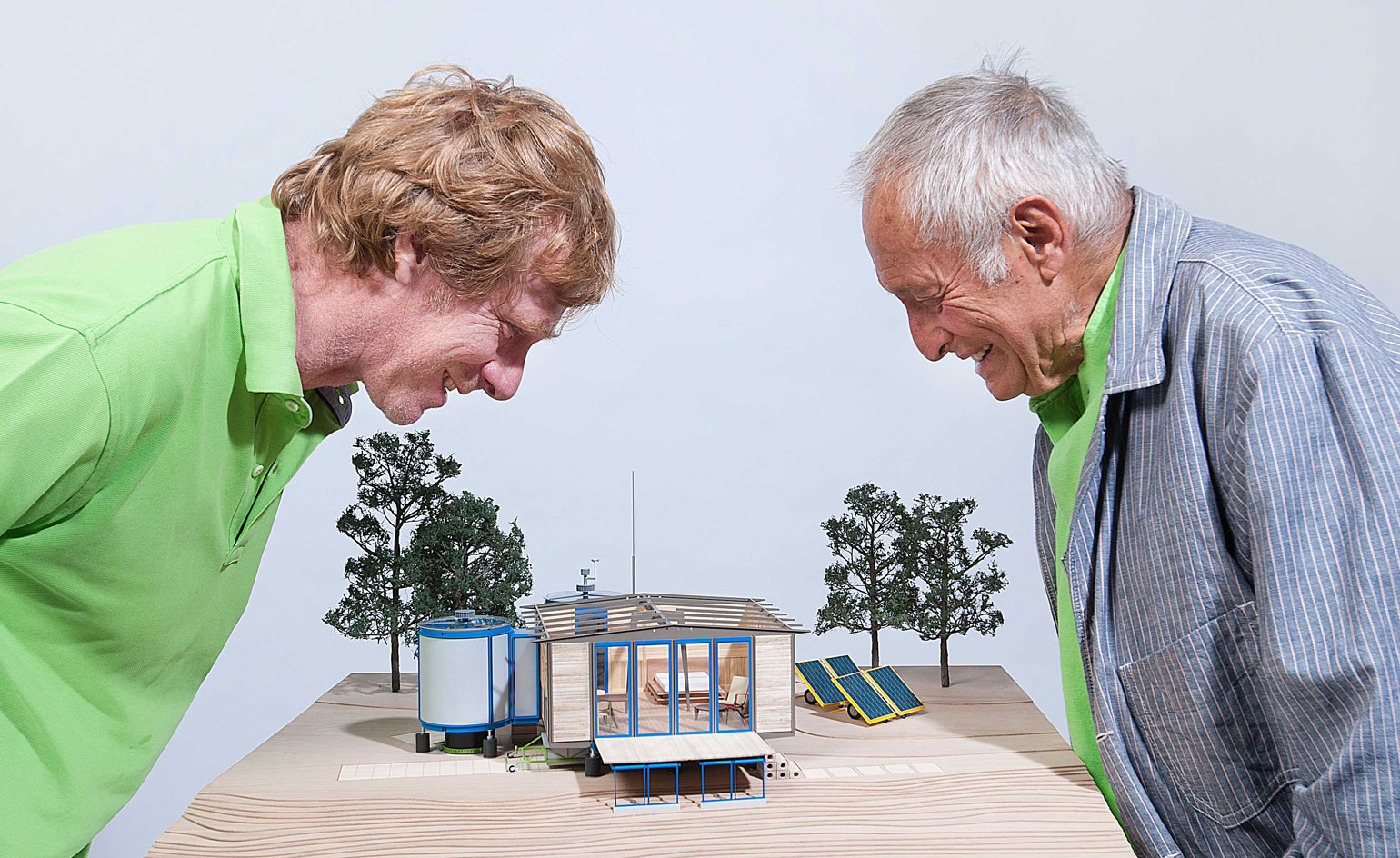
Ivan Harbour, the RSHP partner leading the project, and Richard Rogers look upon the model of their adapted Prouvé shelter. Courtesy of Galerie Patrick Seguin
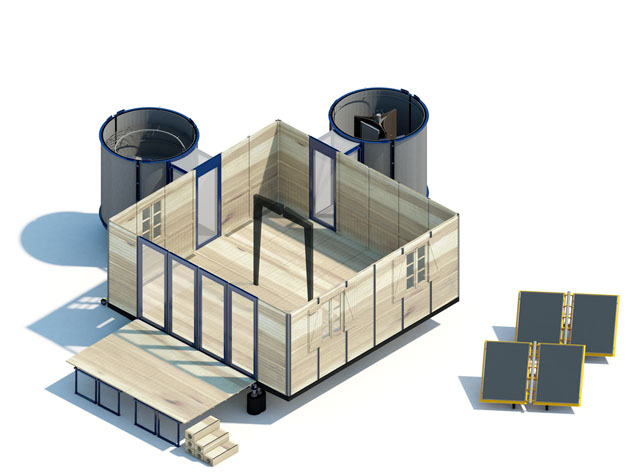
The two newly commissioned cylindrical capsules designed by Rogers Stirk Harbour + Partners (RSHP), will host kitchen and bathroom facilities that can be attached to the original Prouvé house
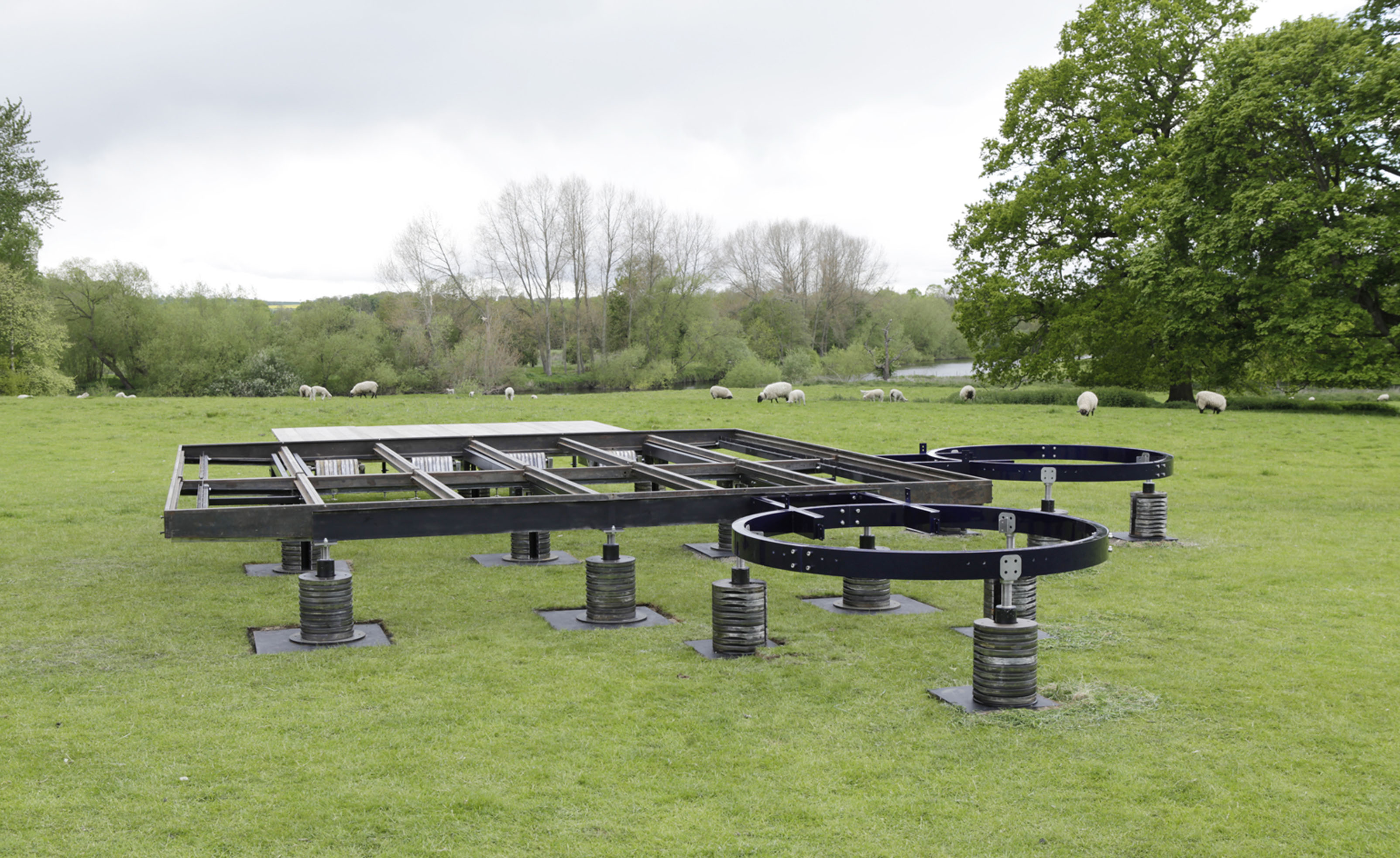
Seguin embarked on the project in December 2013, approaching Richard Rogers, an old friend, about RSHP undertaking the adaptation, confident that the practice would respect the original structure, while offering an innovative solution. Courtesy of Galerie Patrick Seguin
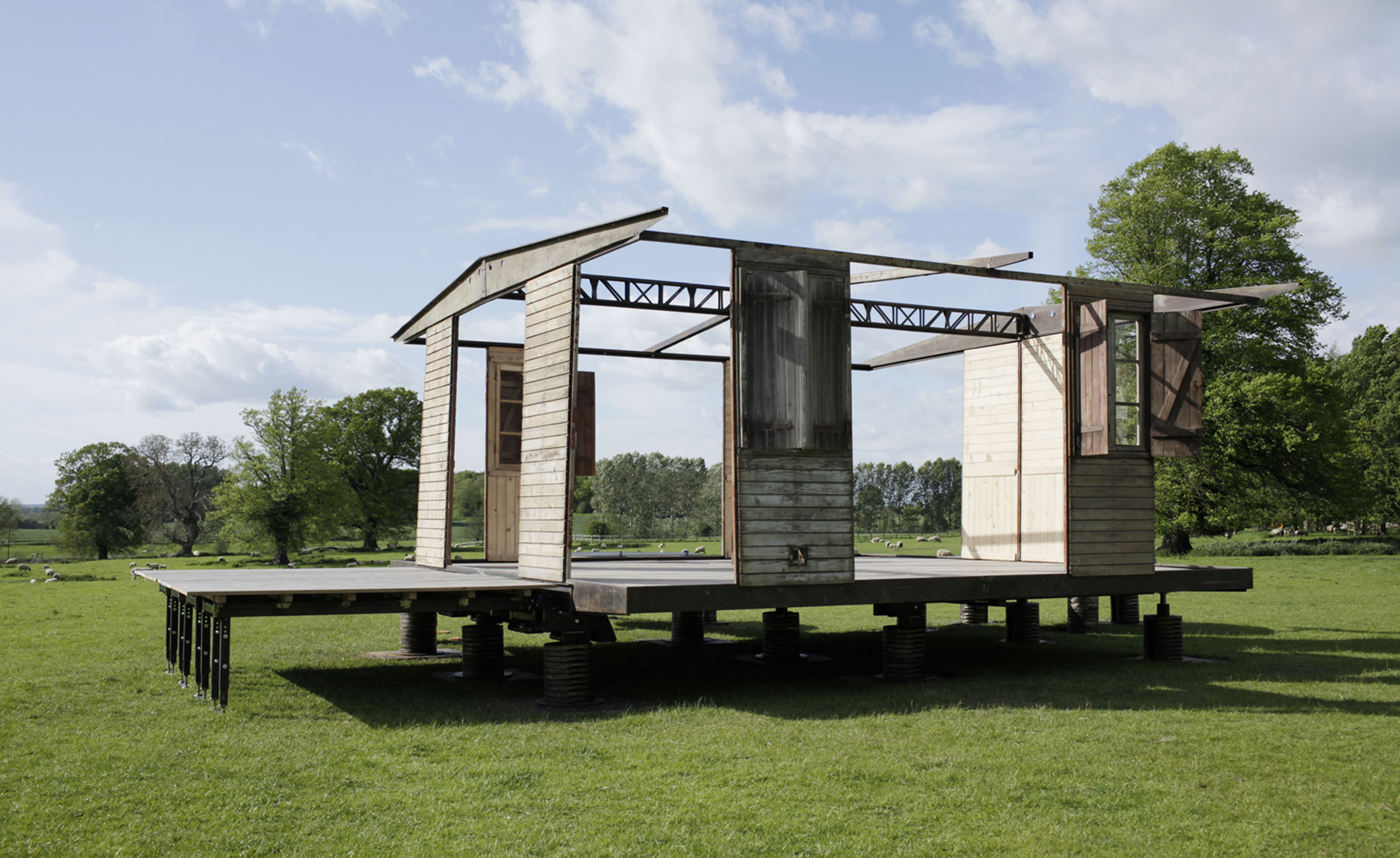
‘The brief was rather simple: turn this house into an autonomous retreat that can function anywhere in the world, from summers in the south of France, to winters in Colorado,’ says Ivan Harbour, the RSHP partner leading the project along with Tadashi Arai. Courtesy of Galerie Patrick Seguin
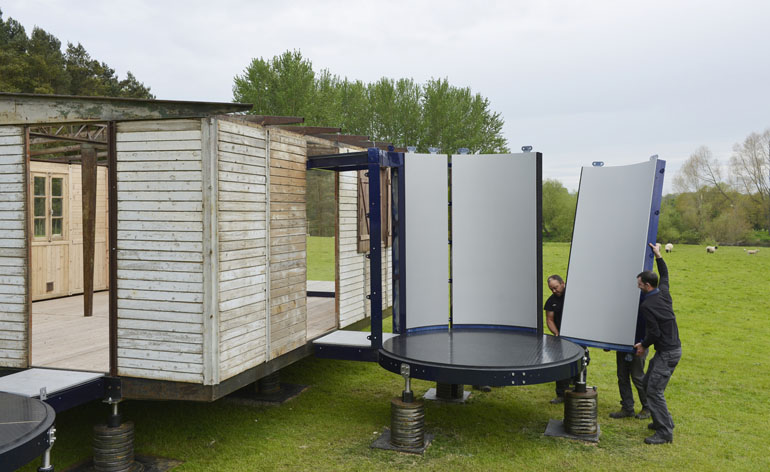
The original structure’s prefabricated components could be assembled in as little as a day, a truly mobile home built without any foundation. Courtesy of Galerie Patrick Seguin

The adapted structure is just as light on its feet and the house is now entirely self-sufficient, equipped with a bathroom and a kitchen powered by two service trolleys that slide discreetly underneath the house’s frame...The adapted structure is just as light on its feet and the house is now entirely self-sufficient, equipped with a bathroom and a kitchen powered by two service trolleys that slide discreetly underneath the house’s frame...
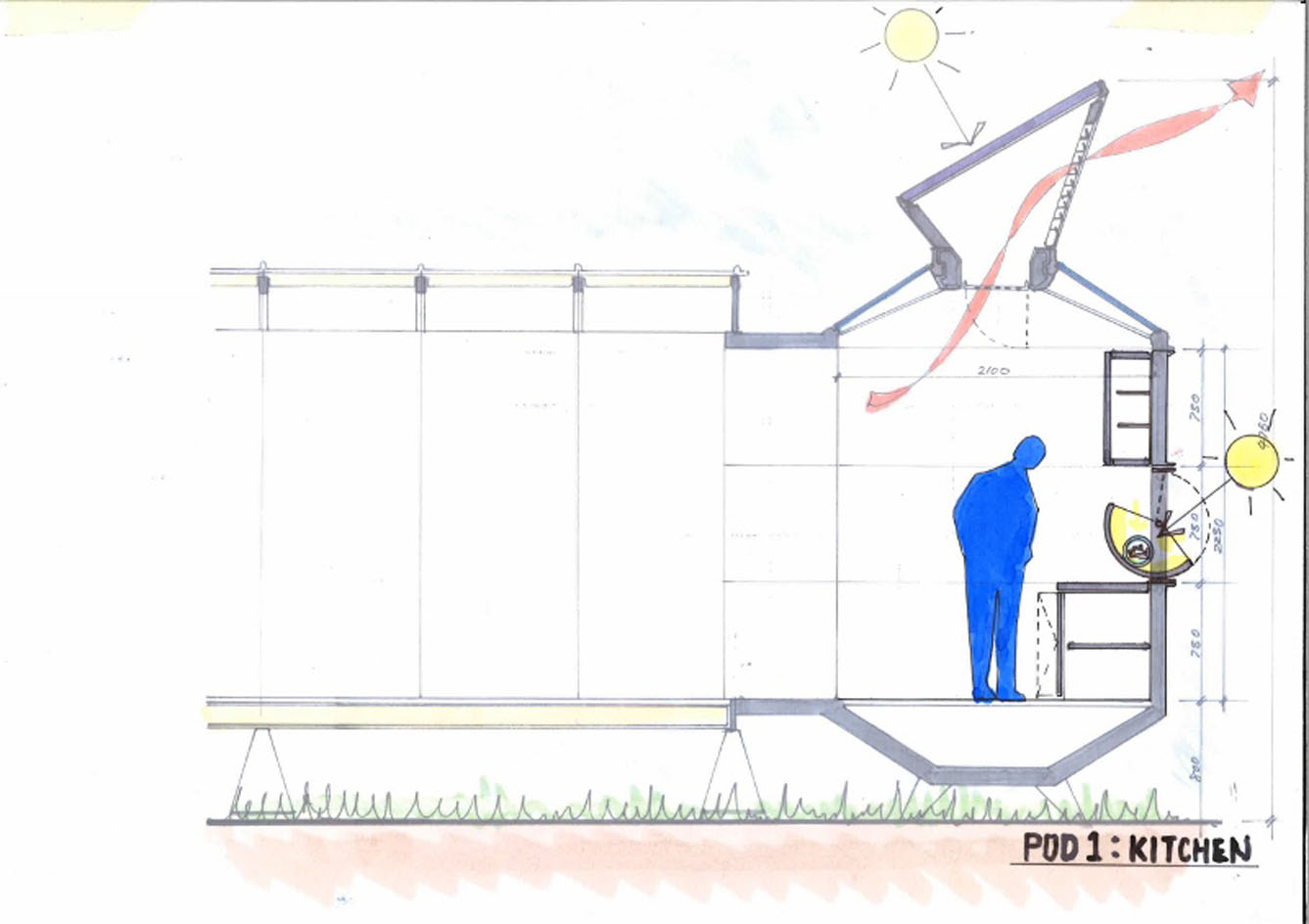
...one is for recycled rain water (drinking water will be topped up separately), the other for electricity (from solar panels)
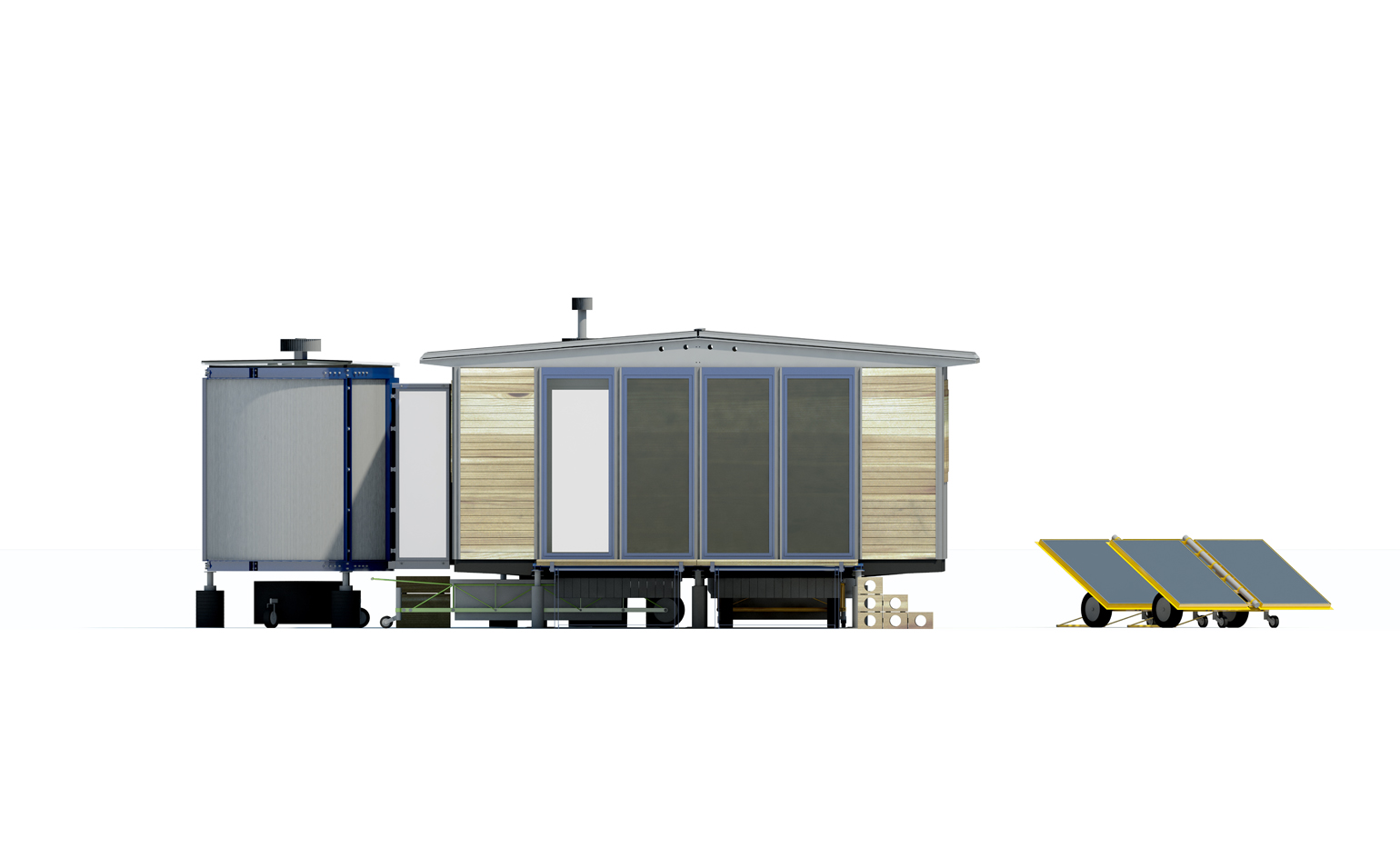
For RSHP, the key was to touch the existing building as lightly as possible and avoid aping Prouvé’s language. Their adaptation, which adds just eight square metres of space to the house’s existing 36, would be clearly distinct and separate, while staying true to Prouvé’s mission.

Seguin and RSHP’s ambition is to both preserve and reinvent a piece of architectural genius, lending it new power to engage and inspire, its signifcance underlined by extending its life into the 21st century
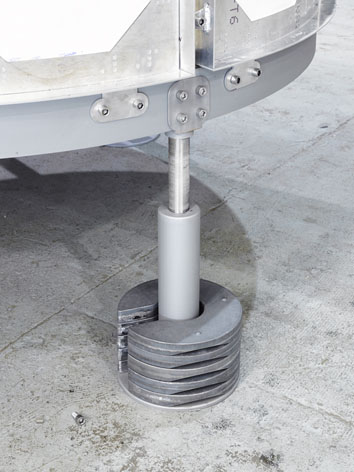
The completed project will be showcased at Design Miami/Basel by Seguin's Paris-based gallery.
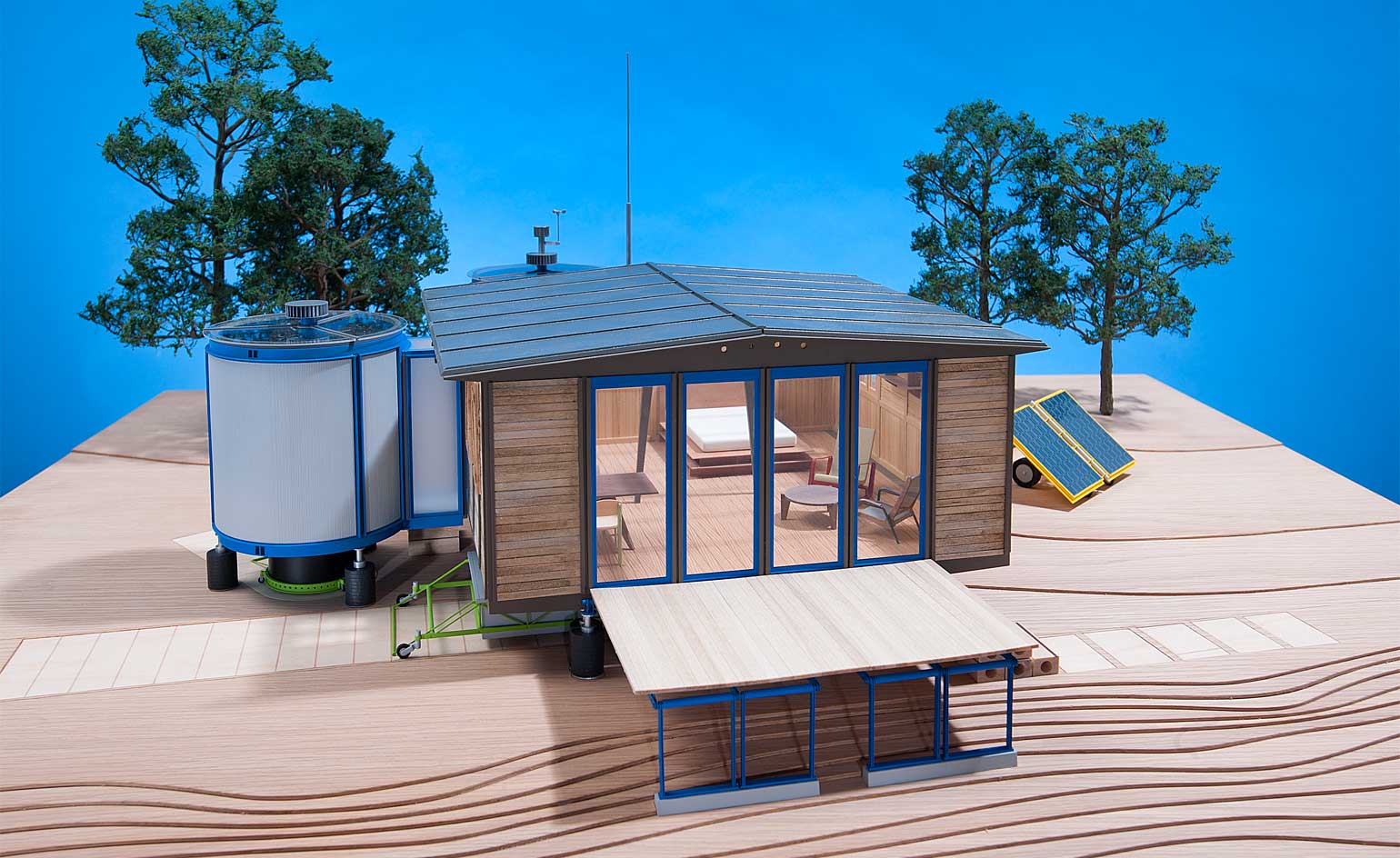
Rogers Stirk Harbour + Partners worked on a special architectural model of the project. Courtesy of Galerie Patrick Seguin
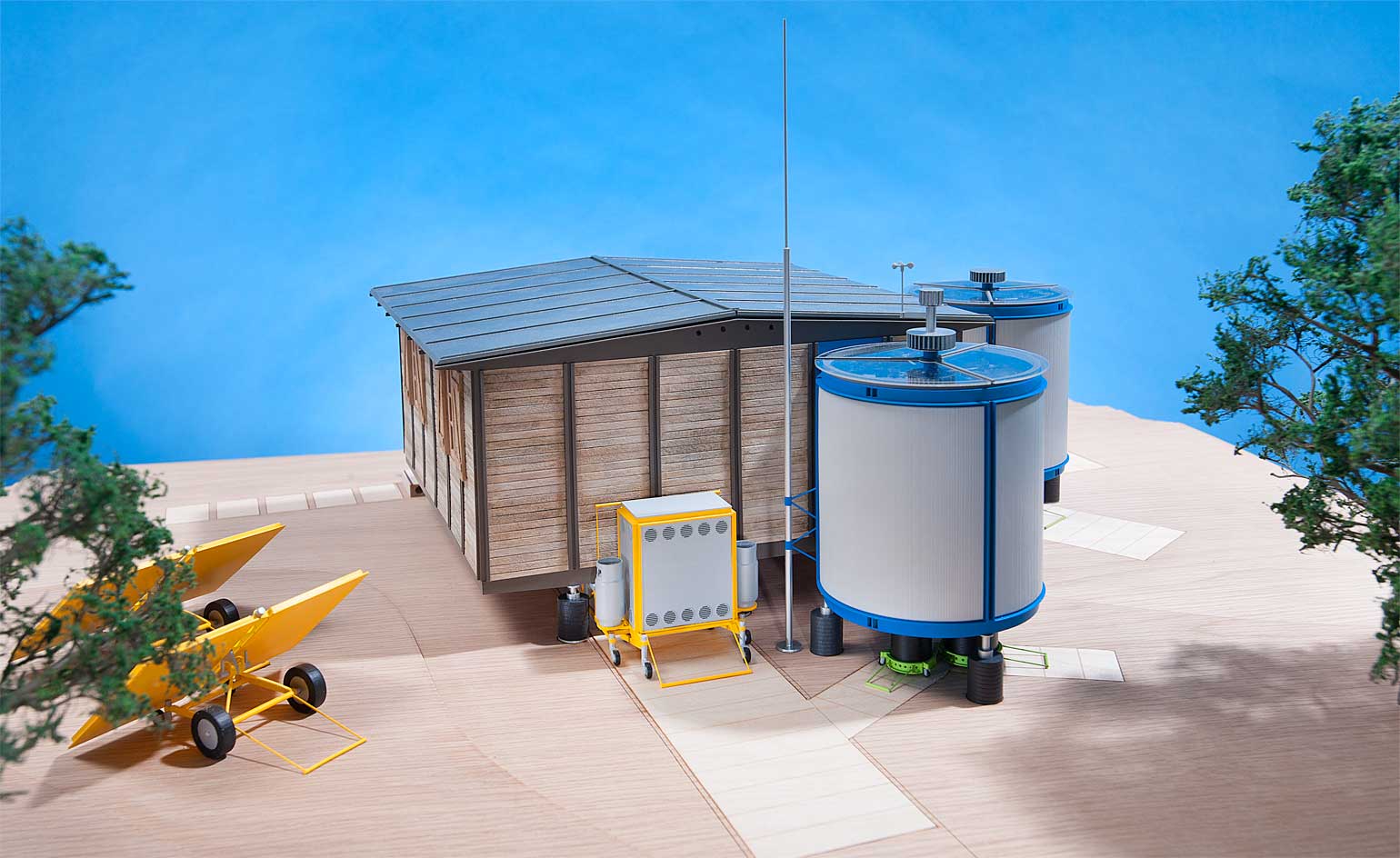
‘These buildings were conceived as temporary constructions to meet a necessity,' explains Seguin. 'They survived in very limited numbers and, in order to ensure they don’t disappear altogether, we must give them a second chance. Courtesy of Galerie Patrick Seguin

The six-metre-square weathered steel-and-timber frame house was originally designed as part of an order for emergency housing from the Ministry of Reconstruction and Town Planning, to rehouse war victims in bomb-ravaged France. Courtesy of Galerie Patrick Seguin
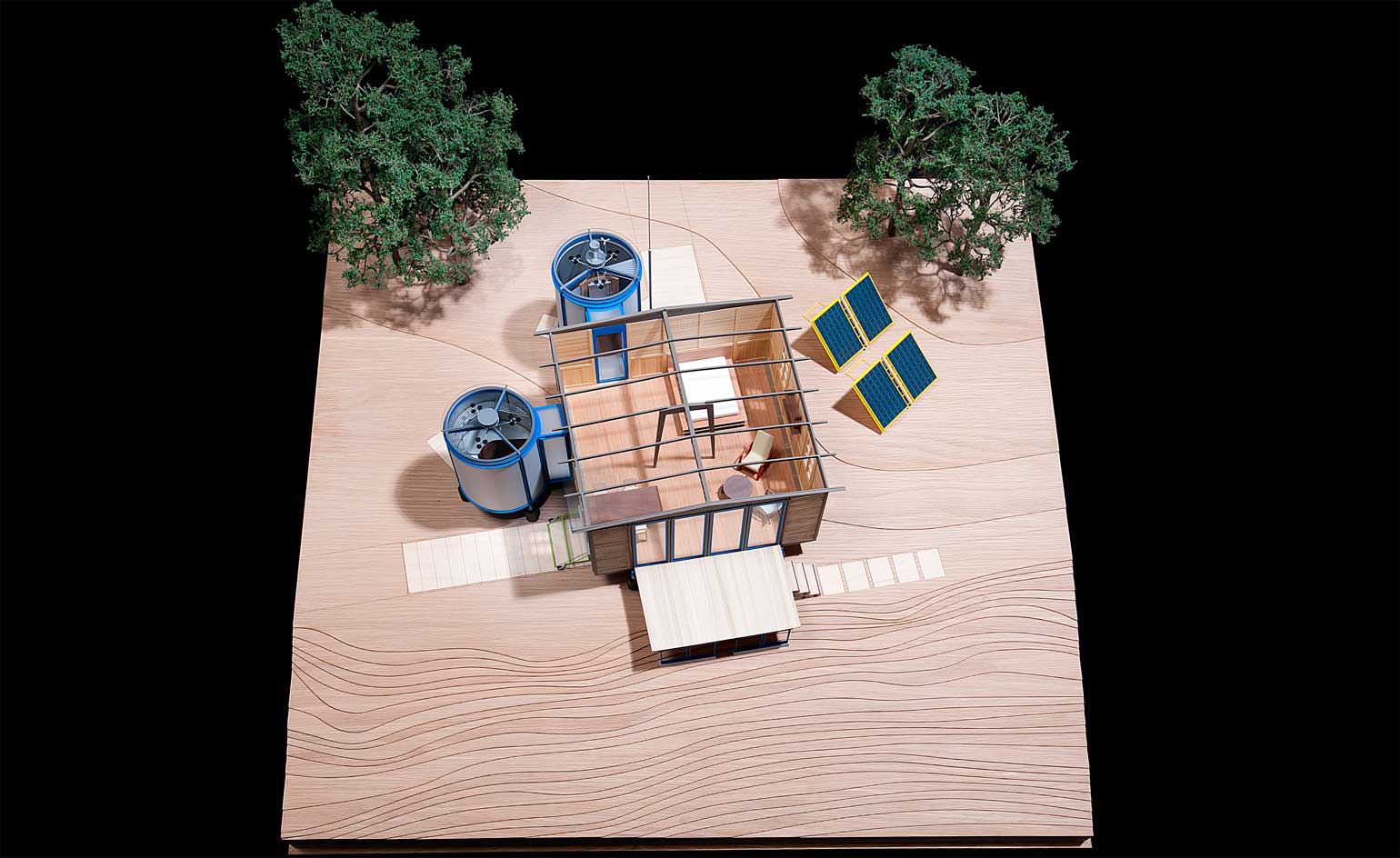
Undeniably, the humble house is beautiful in its rusted, rustic simplicity and enduringly relevant in form and thinking. Courtesy of Galerie Patrick Seguin
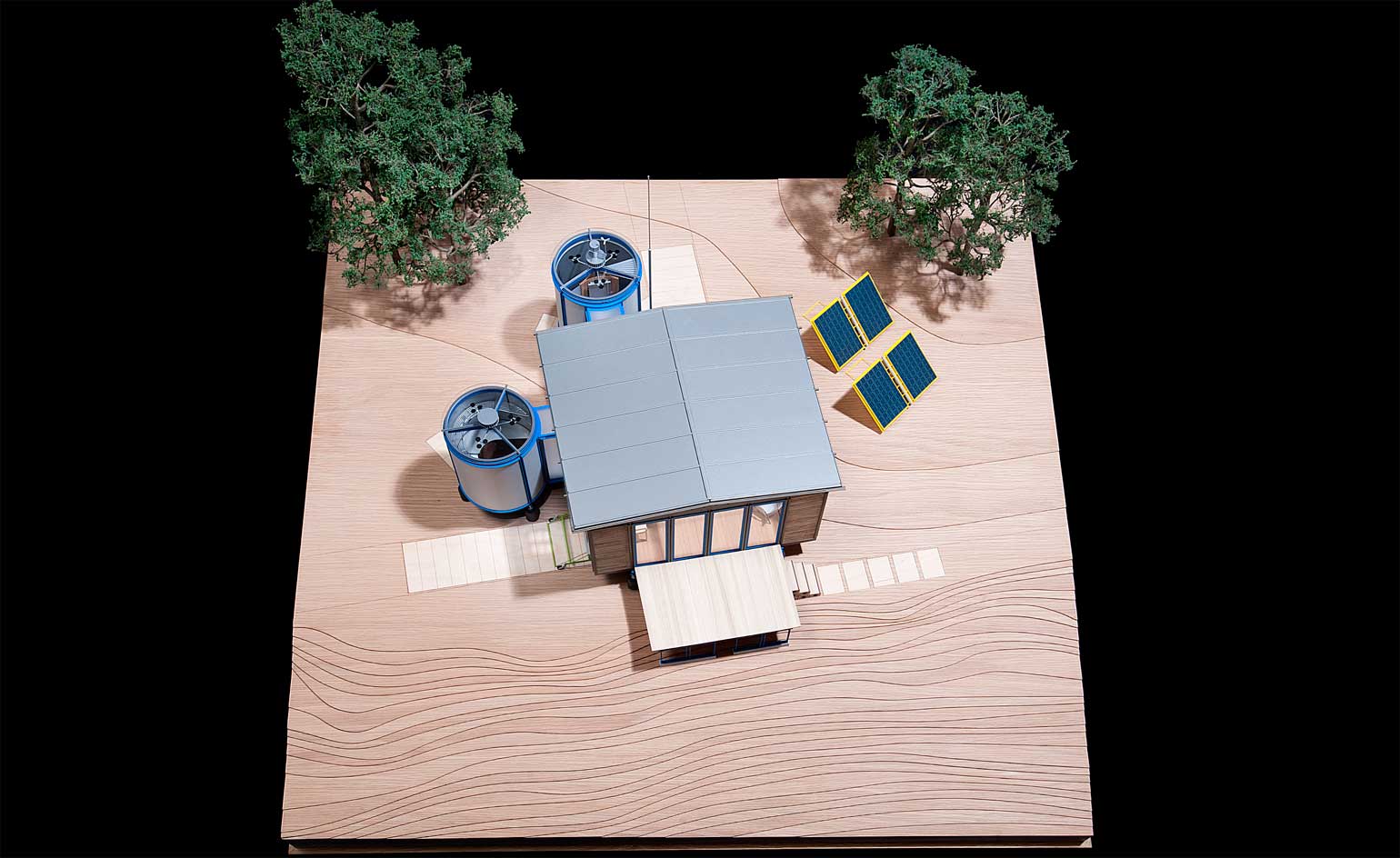
Ultimately, they hope the redesign might also encourage fresh thinking about demountable disaster relief housing. Courtesy of Galerie Patrick Seguin
Wallpaper* Newsletter
Receive our daily digest of inspiration, escapism and design stories from around the world direct to your inbox.
-
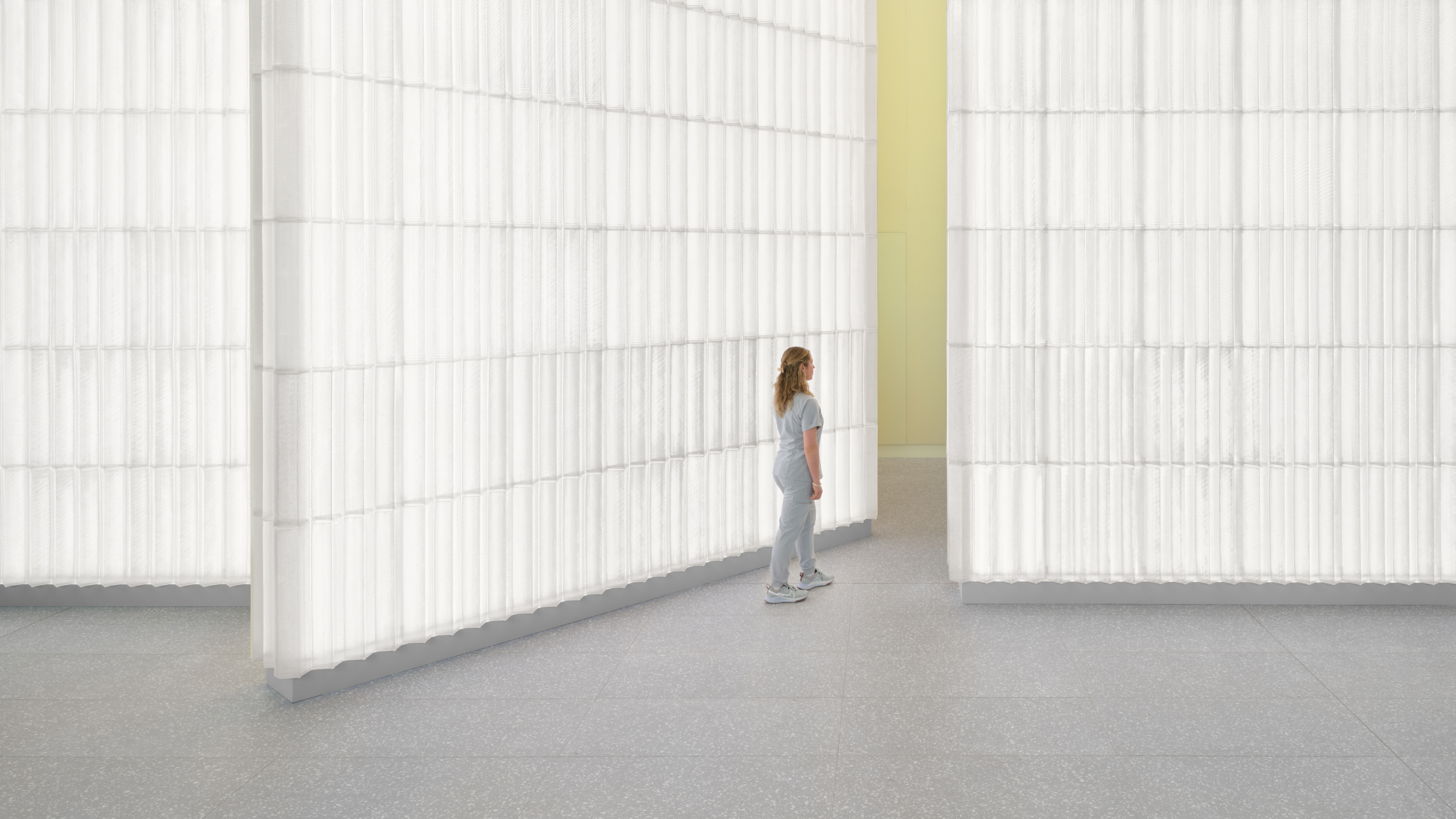 Neko Health expands in London with a new Spitalfields site. We take a scan
Neko Health expands in London with a new Spitalfields site. We take a scanWhat’s it like to experience Neko Health’s ultra-high-tech health scanning system? Wallpaper* went under the laser lights to find out
By Jonathan Bell Published
-
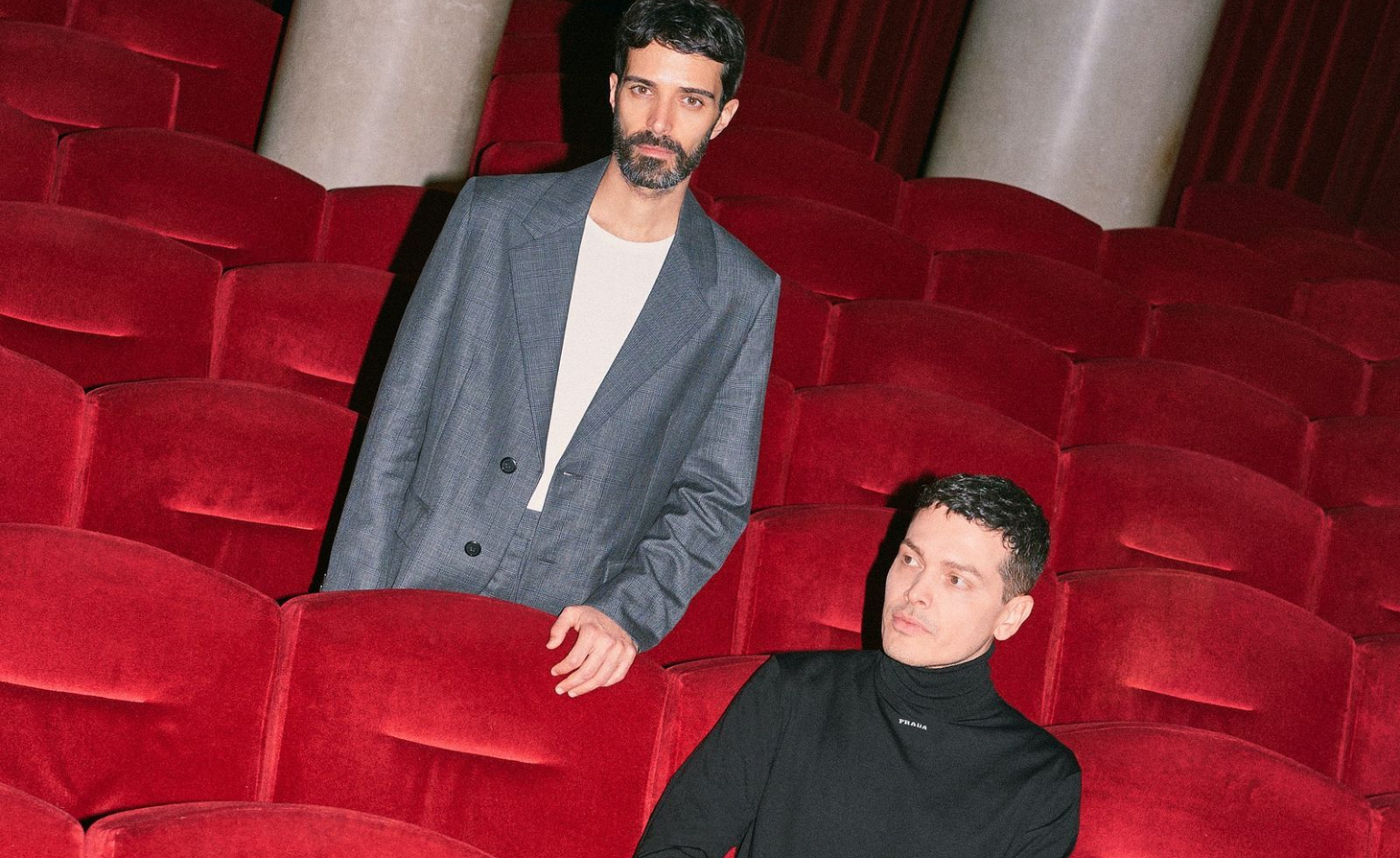 Everything you need to know about Italy's Lake Maggiore, according to Formafantasma
Everything you need to know about Italy's Lake Maggiore, according to FormafantasmaFrom baroque gardens to panoramic views, Andrea Trimarchi and Simone Farresin show us around this Italian escape
By Sofia de la Cruz Published
-
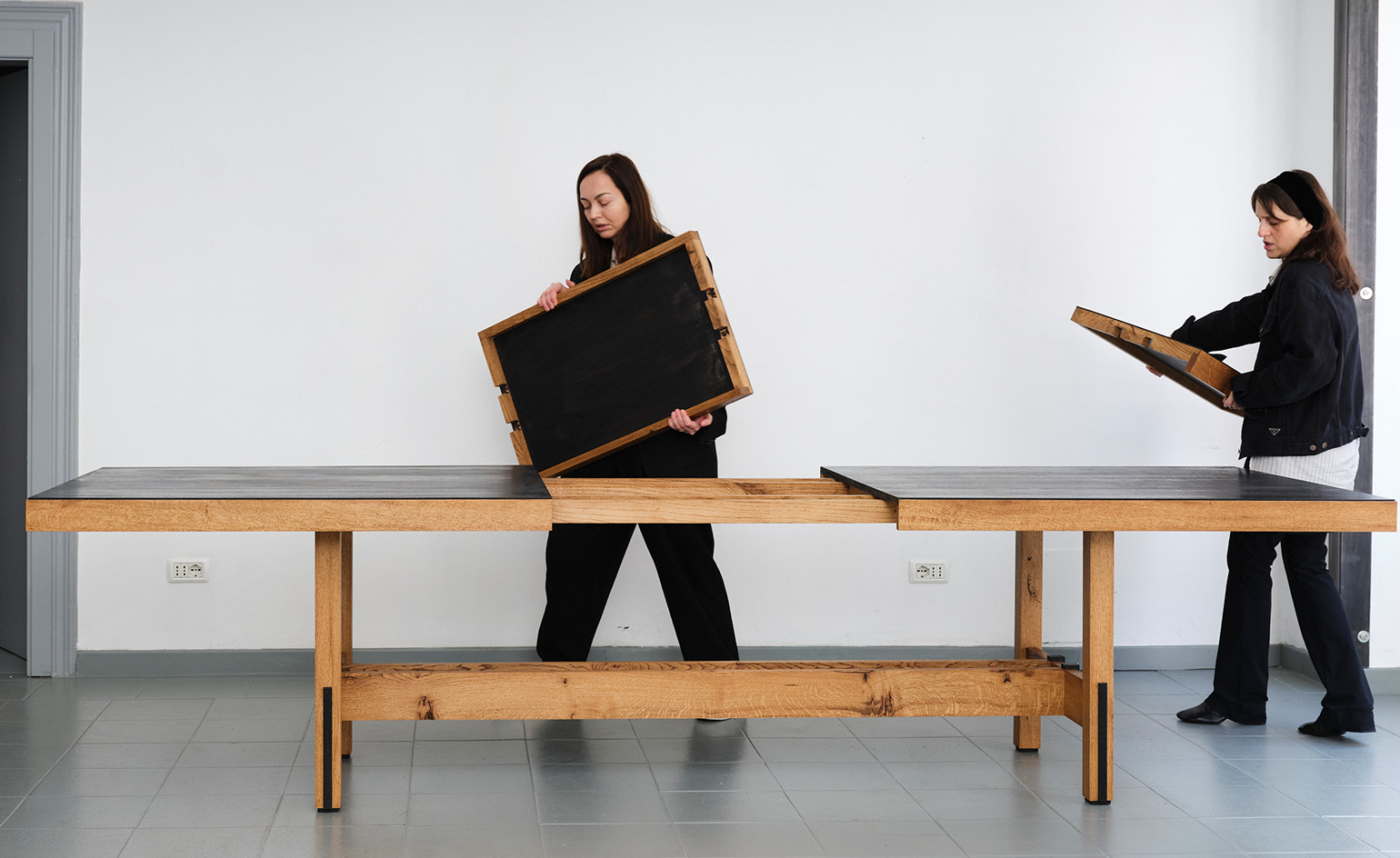 In Milan, Rooms Studio examines Georgia’s shifting social landscape
In Milan, Rooms Studio examines Georgia’s shifting social landscapeExpandable tables that reference recent government protests and lamps held together with ‘chewing gum’ feature in the Tbilisi-based studio’s Milan Design Week 2025 installation
By Dan Howarth Published
-
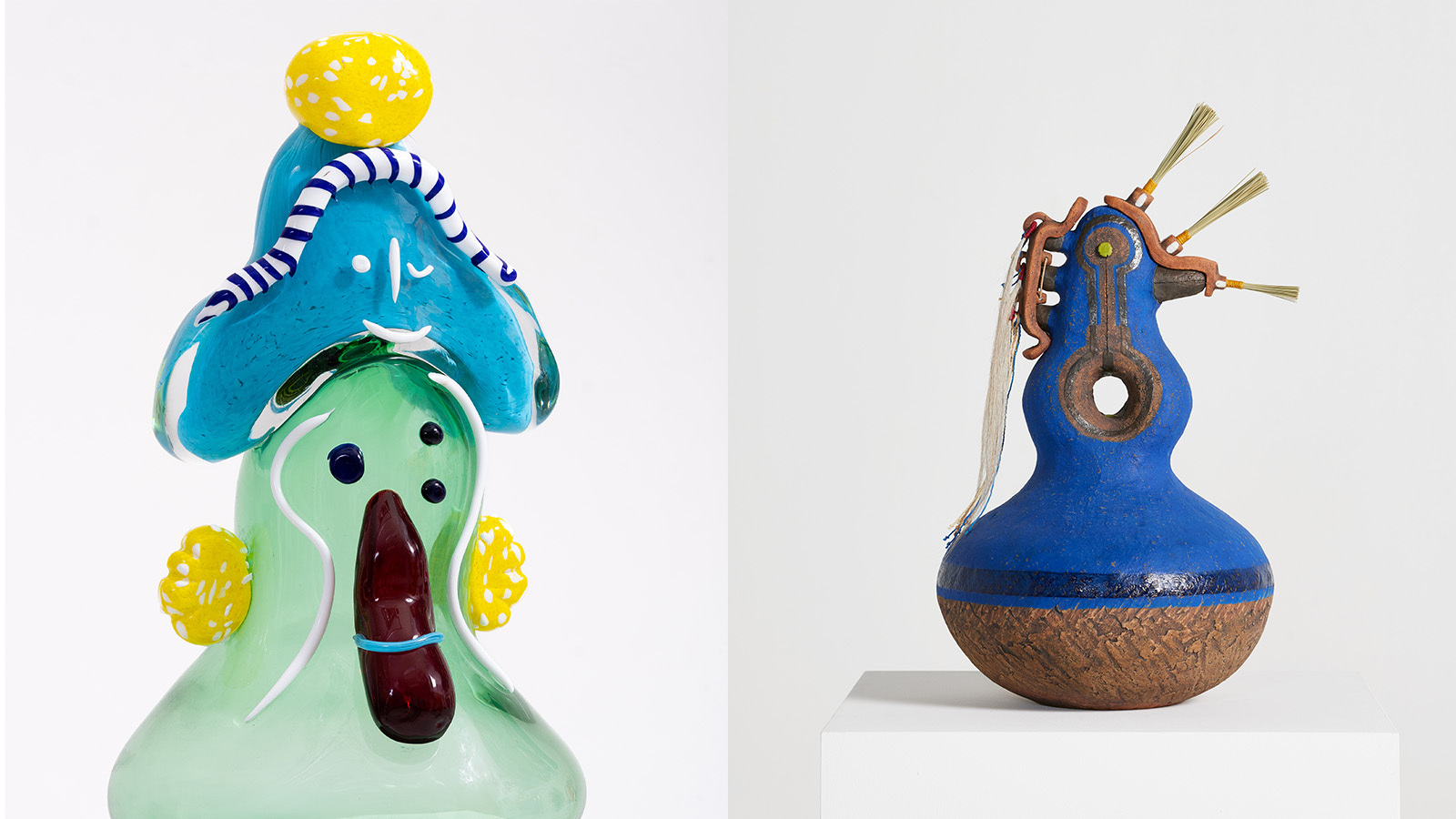 Design Miami 2024 is alive with possibility: here are 14 things to see
Design Miami 2024 is alive with possibility: here are 14 things to seeDesign Miami 2024 opens 4-8 December – let Wallpaper* guide you to the highlights, from dazzling installations to plump sofas and anthropomorphic sculptures
By Ali Morris Published
-
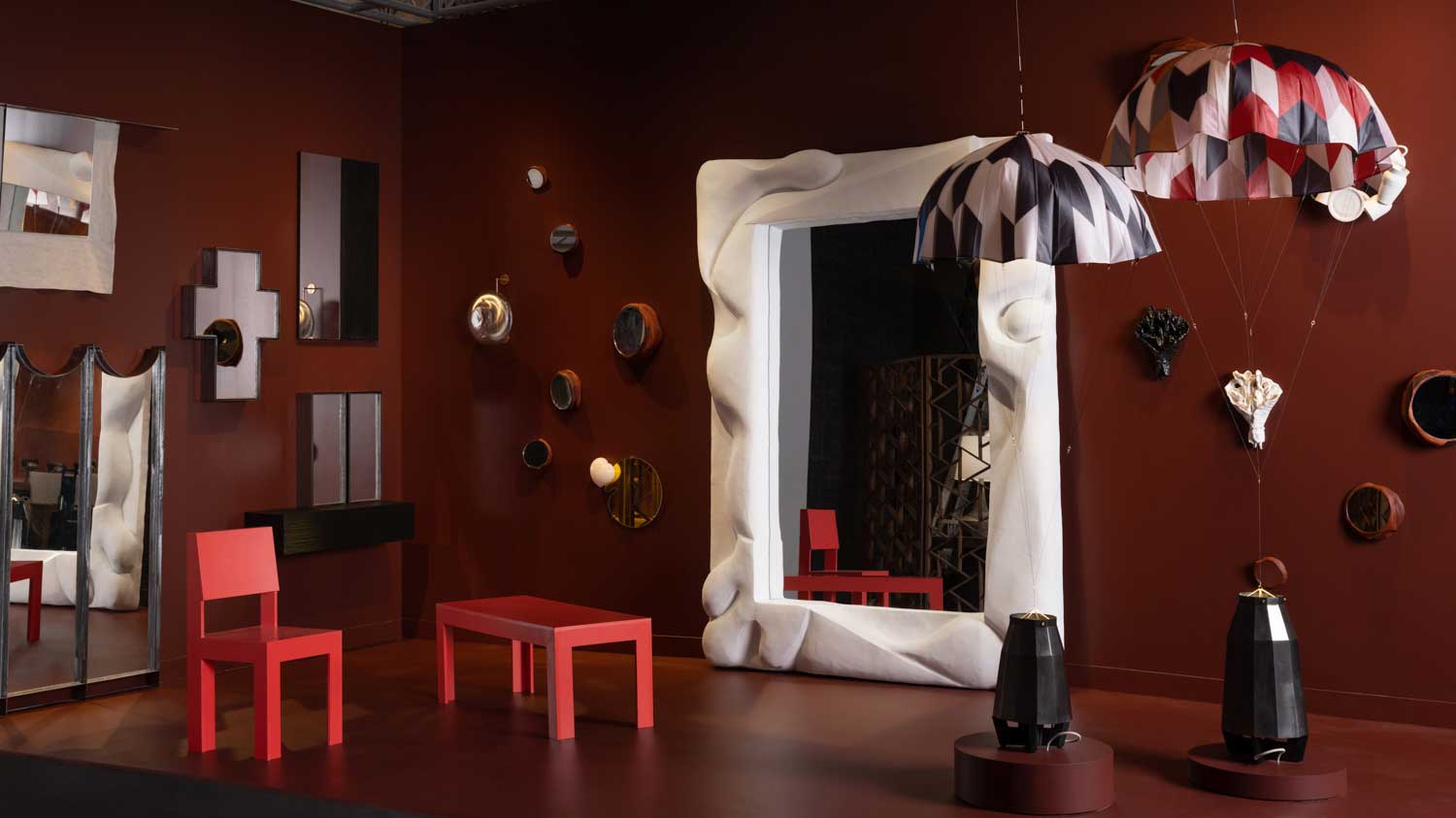 Design Miami 2022: highlights from the fair and around town
Design Miami 2022: highlights from the fair and around townDesign Miami 2022 (30 November – 4 December) aims at ‘rebooting the roots of our relationship with nature and collective structures, ecospheres, and urban contexts’
By Sujata Burman Last updated
-
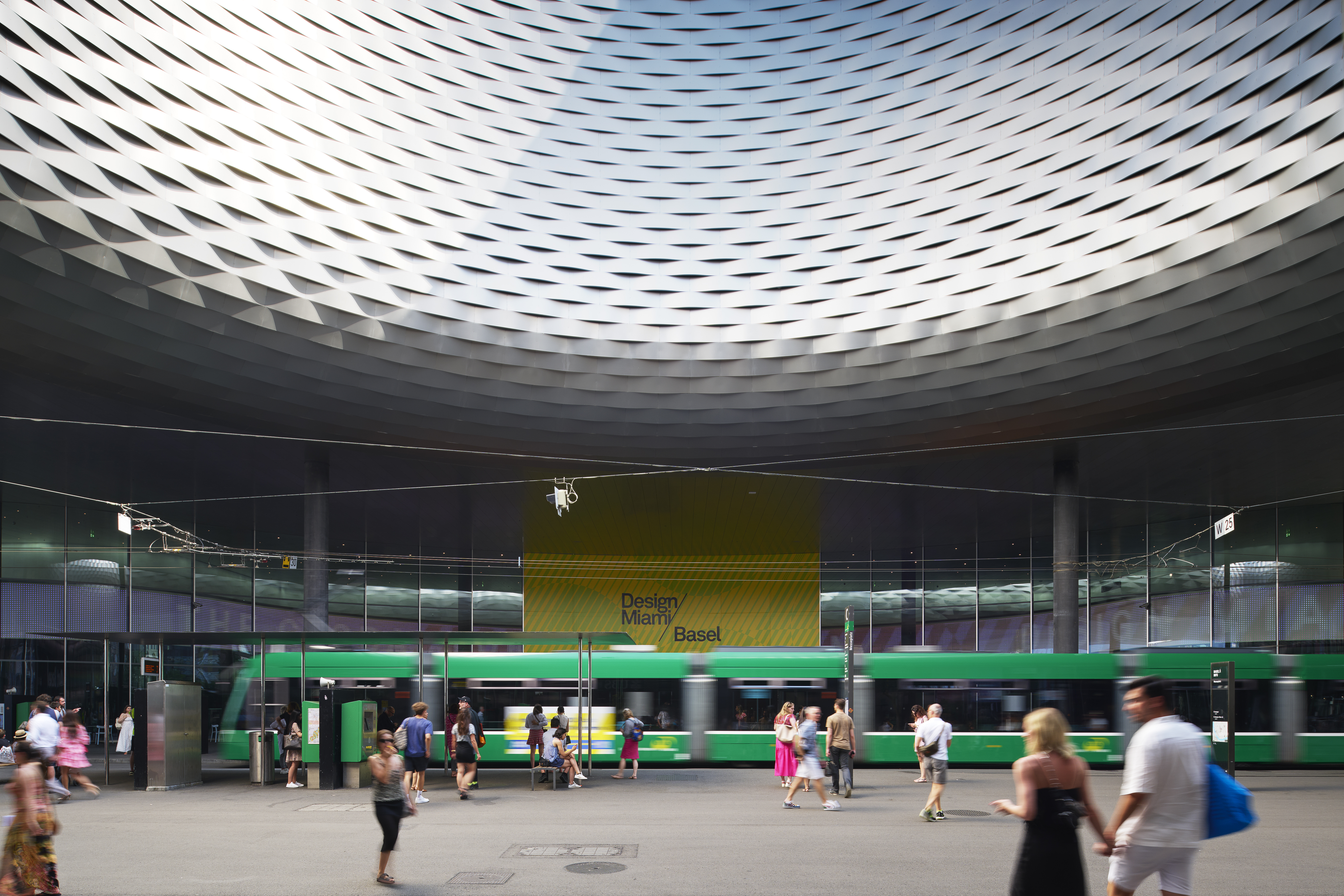 Design Miami/Basel 2022 explores the Golden Age
Design Miami/Basel 2022 explores the Golden AgeDesign Miami/Basel 2022, led by curatorial director Maria Cristina Didero, offers a positive spin after the unprecedented times of the pandemic, and looks at the history and spirit of design
By Rosa Bertoli Last updated
-
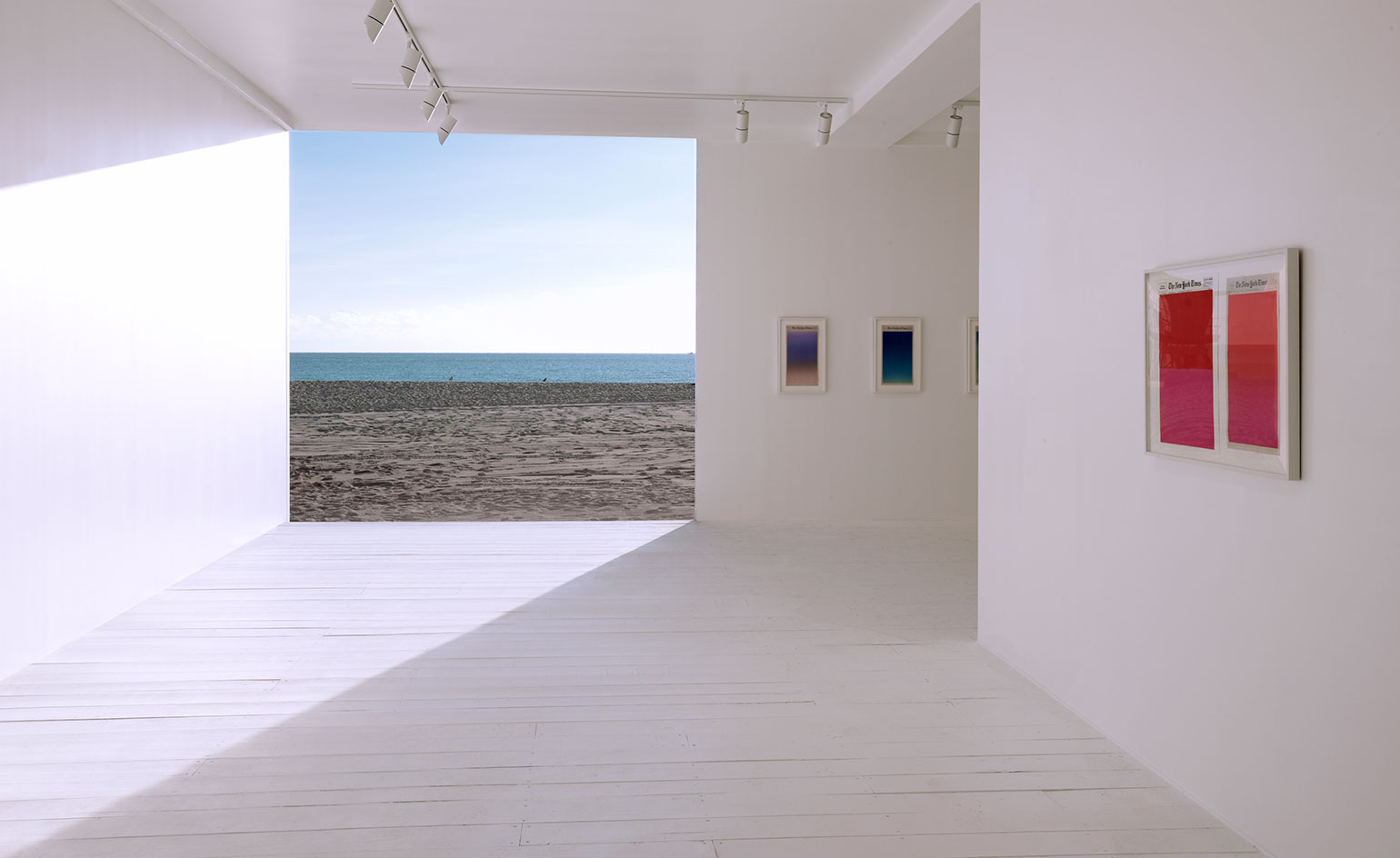 Fashion’s finest findings at Design Miami and Art Basel Miami Beach 2021
Fashion’s finest findings at Design Miami and Art Basel Miami Beach 2021It wasn’t only art and design aficionados that descended on Miami this week; the fashion crowd also flocked to city, including luxury houses such as Loewe, Saint Laurent and Fendi
By Laura Hawkins Last updated
-
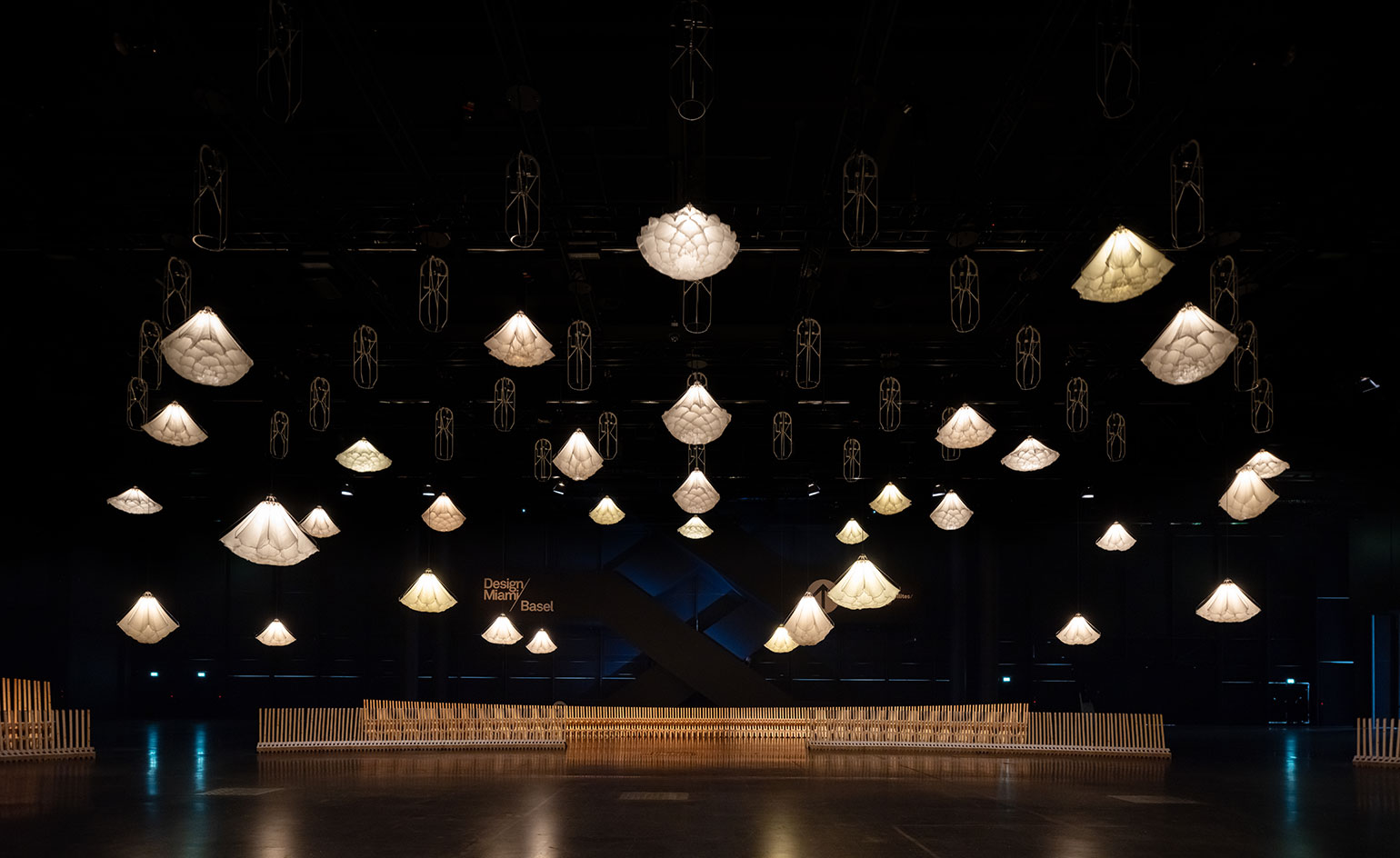 Design Miami/Basel 2021: the Wallpaper* highlights
Design Miami/Basel 2021: the Wallpaper* highlightsAs Design Miami returns to Basel (21 – 26 September 2021), we look at the fair’s highlights, including thematic displays, Curio presentations, and large-scale installations
By Rosa Bertoli Last updated
-
 Design Miami launches shop to support Covid-19 key workers
Design Miami launches shop to support Covid-19 key workersDesign Miami/ Shop will include collectible design from 52 international galleries, and the new charitable initiative in collaboration with international designers and artists
By Rosa Bertoli Last updated
-
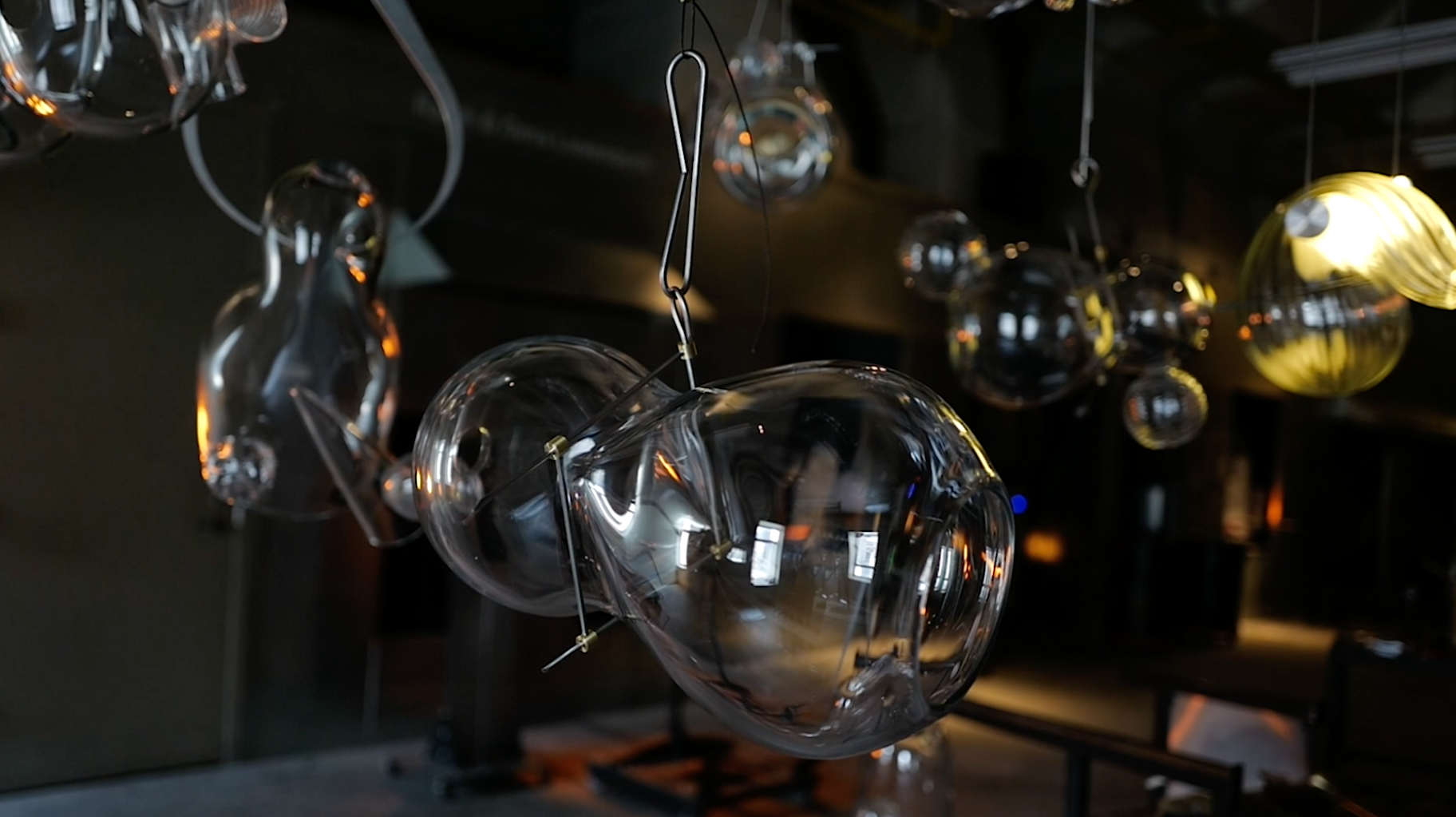 Scientific theory and 1980s rock inspire Lindsey Adelman’s Paradise City
Scientific theory and 1980s rock inspire Lindsey Adelman’s Paradise CityBy Alice Morby Published
-
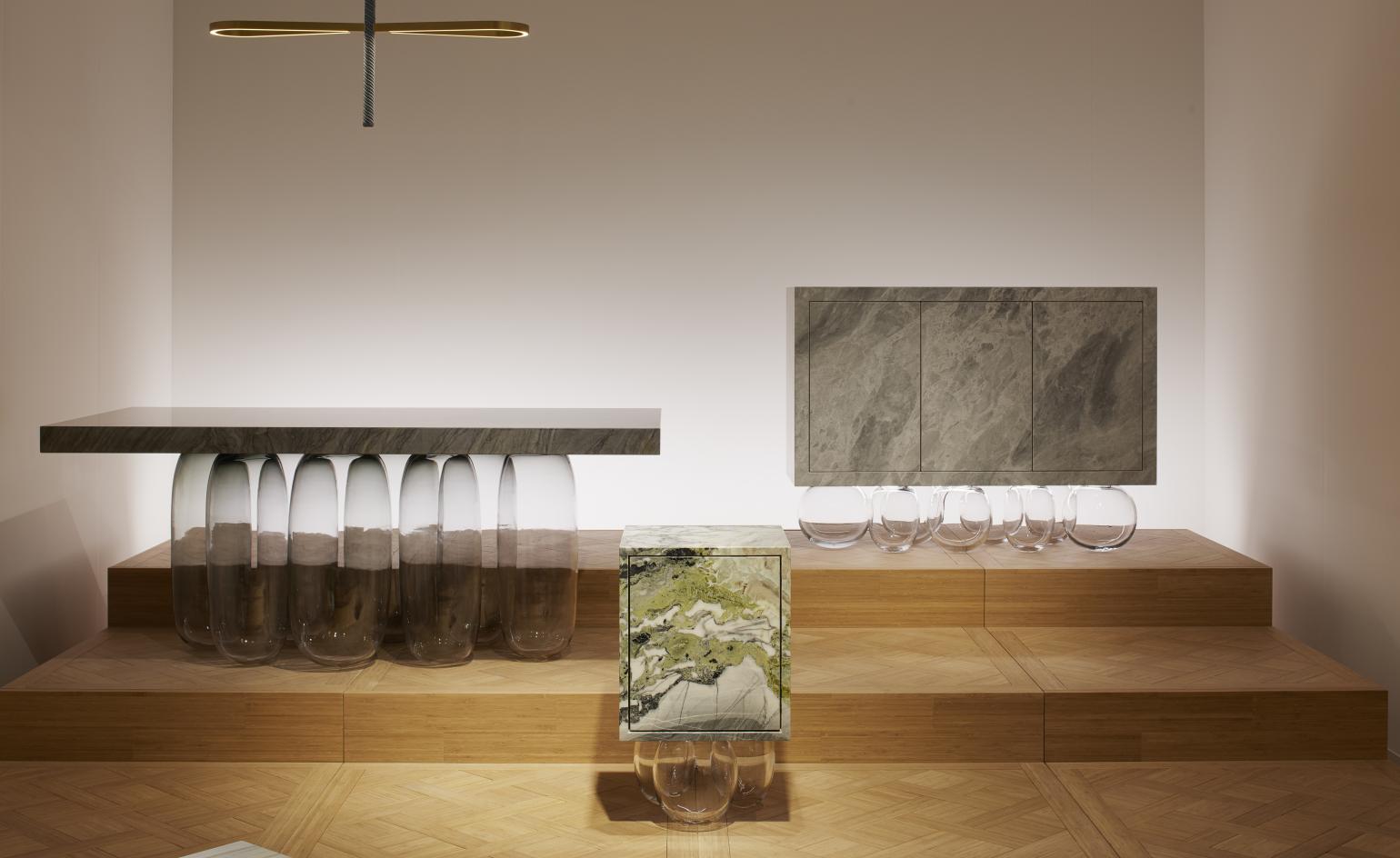 Experiments and curious showcases at Design Miami/Basel
Experiments and curious showcases at Design Miami/BaselBy Henrietta Thompson Last updated